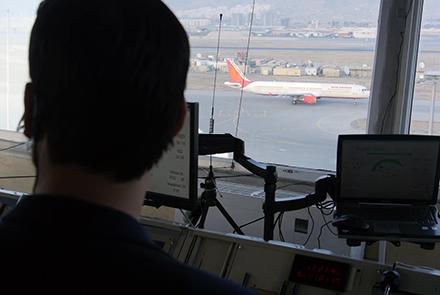Mohammad Qasim Wafaeezada, head of Afghanistan’s Civil Aviation Authority, said Monday that with the increase in flights crossing the country’s airspace, civil aviation revenue has increased by an average of $100,000 per day.
Transit flights through Afghanistan have been on the rise for the past twelve days following the accidental shoot-down of a Ukrainian aircraft in Iran and the diversion of many flights through Afghanistan.
Currently, more than 400 aircraft pass through Afghanistan’s airspace every day, according to aviation officials.
Zada said that even if the region's airspace returned to normal, a number of aviation companies would continue to use the Afghan air space instead of other countries in the region.
The civil aviation authority at the moment earns $700 from every airline crossing the country's airspace.
According to civil aviation officials, the authority has recently created two new routes into the country, which contribute eight percent to the increase.
A tourism company union says the newly-increased revenue should be spent on improving aviation services and improving the country's infrastructure and airports.
“Afghanistan’s airports do not meet standards, and this is a huge challenge. Companies interested in coming to Afghanistan do not come due to the lack of standards-meeting airports,” said Massoud Bina, the union deputy.
However, officials at the civil aviation authority maintain that the main reason for the increased revenue is that various aviation companies, and the International Air Transport Association (IATA), do in fact have faith in Afghanistan's aviation capacity.
The head of the civil aviation authority said that with the new changes, the annual revenue of the country would increase by more than $30 million per year.
Over the past year, however, the aviation authority has failed to meet its revenue target.
The authority was supposed to generate Afs10 billion during the fiscal year but could raise only Afs7.2 billion.
In addition to its revenue from transit flights, the country's aviation authority generates revenue from other airfield services, which include landing and parking fees, but still, 60% of the authority's revenues are gained from airspace fees.


